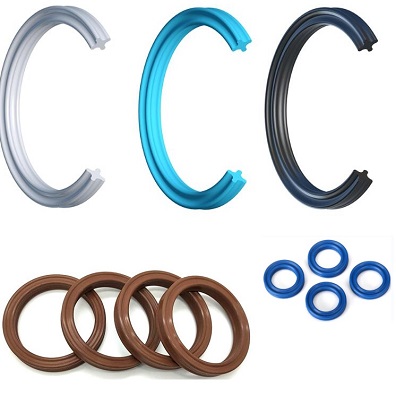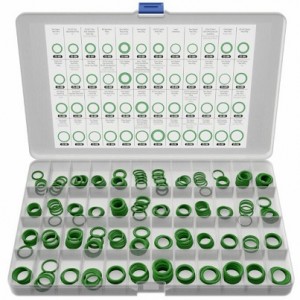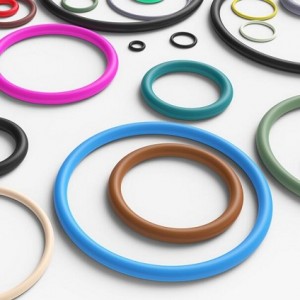THE DIFFERENCE BETWEEN X-RINGS /QUAD-RING AND O-RINGS
THE DIFFERENCE BETWEEN X-RINGS /QUAD-RING AND O-RINGS
X-rings, also referred to in the industry as Quad-Rings, are characterized by a four lipped symmetric profile. They provide an alternative sealing option for use in dynamic applications.
There are several reasons you may select an X-ring over a standard O-ring. First, O-rings can be prone to roll from reciprocating movement.
The lobes of an X-ring create stability in a gland, maintaining contact in two locations against the sealing surface.
Second, the lobes of an X-ring create a reservoir for lubricant which reduces friction. Lastly, an X-ring does not require a high amount of squeeze, which also reduces friction and wear on the seal.
BD SEALS specializes in rubber x-rings.
With over 20 years of engineering expertise we are dedicated to offering the highest quality rubber x-rings and other products.
For your custom rubber x-rings design, or reverse engineering, our exemplary service and efficient production ensures prompt deliveries coupled with outstanding service.
The X factor: X-Rings vs O-Rings
What is an O-ring?
An O-ring is a loop of elastomer with a round cross-section, primarily used to seal two connecting parts in both static and dynamic applications. They are commonly used to prevent leaks between sealing surfaces and are often found in a variety of industrial applications, including motorcycle chains known as o-ring chains.
O-rings offer a simple yet effective way to make seals and prevent metal-on-metal contact between components, thus minimizing wear and extending seal life. Because of their versatility, O-rings are available in various materials like silicone, nitrile, and fluorocarbon, each offering unique benefits such as heat resistance.
What is an X-ring?
An X-ring has an X-shaped cross-section rather than a round one like the O-ring. This unique design allows it to offer more sealing interfaces, making it especially in dynamic applications where movement and pressure changes are frequent. X-rings are often used in high-pressure environments and offer extended service life compared to traditional O-rings. They are particularly useful in applications requiring a tight seal, such as x-rings chains in motorcycle chains. Much like standard O-rings, X-rings come in a variety of materials designed for specific applications, with properties such as heat resistance and enhanced seal life.
Material Variations: A Closer Look at X-Ring and O-Ring Options
Different materials offer distinct advantages and limitations, and choosing the right one can dramatically impact the seal life and overall performance of the inner components of the ring. Below we break down some popular materials for both O-rings and X-rings.
Material Options for O-Rings
- Nitrile Rubber: This is a standard material for O-rings and is highly resistant to oil and other petroleum products. It’s an excellent choice for automotive applications and o-ring chains in motorcycles.
- Silicone: Known for its excellent heat resistance, silicone O-rings are ideal for applications where high temperatures are a concern, such as in aerospace or kitchen appliances.
- Fluorocarbon: For harsh environments that require chemical resistance, fluorocarbon O-rings are a solid choice. They are also commonly found in aerospace applications.
Material Options for X-Rings
- Hydrogenated Nitrile Butadiene Rubber (HNBR): This material offers exceptional mechanical properties and is resistant to wear, making it suitable for high-pressure pumps and x-ring chains in motorcycle chains.
- Ethylene Propylene Diene Monomer (EPDM): This material is ideal for outdoor applications due to its resistance to UV light and weather conditions. It is often used in roofing and water drainage systems.
- Polyurethane: Known for its durability and extended service life, polyurethane is frequently used in dynamic systems such as pneumatic cylinders and heavy machinery.
Understanding the material composition is crucial when selecting an O-ring or X-ring for a specific application. The right material can ensure optimal performance, durability, and seal life.
Which One is Better: O-rings or X-rings?
The answer to the question of “Which is better—O-rings or X-rings” isn’t straightforward. Both have their unique advantages and disadvantages, and the “better” option depends on your specific needs, application, and operating conditions. Here’s a quick rundown:
For Cost-Effectiveness: O-rings
If initial cost is a significant factor for you, then O-rings are generally more cost-effective. They are less expensive to manufacture, thus, to purchase. However, keep in mind that they may require more frequent replacement, particularly in high-stress or dynamic applications.
For Longevity: X-rings
If you’re looking for a solution that offers an extended service life, X-rings, especially those made of Hydrogenated Nitrile Butadiene Rubber (HNBR), are a strong candidate. Their unique design minimizes friction and wear, extending their lifespan.
For Versatility: O-rings
O-rings come in shape and a broader range of materials and are suitable for various applications, from aerospace to kitchen appliances. Whether you need heat resistance or chemical resistance, there’s likely an O-ring material that fits the bill.
For High-Pressure and Dynamic Applications: X-rings
The more sealing surfaces of an X-ring make it better suited for high-pressure environments or systems with a lot of movement, such as motorcycle chains with X-ring chains.
For Easy Maintenance: O-rings
O-rings are generally easier and quicker to replace, making them a good choice for applications where rapid servicing is required.
Weigh Your Options
In summary, the right choice between an O-ring and an X-ring depends on your specific application requirements, the operational environment, and cost considerations. While O-rings are a solid, versatile option for many applications, X-rings may offer advantages in specific conditions, such as high-pressure and dynamic systems.
Exploring Applications: Where to Use X-Rings and O-Rings
Both O-rings and X-rings have versatile applications across a wide range of industries. Let’s delve deeper into where each type of ring is most effectively utilized.
For more rubber parts or rubber seals ,please free to contact us .









